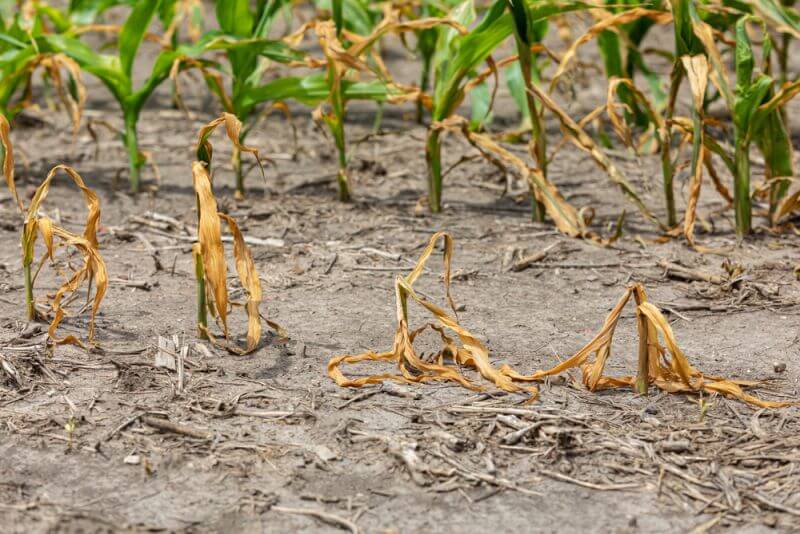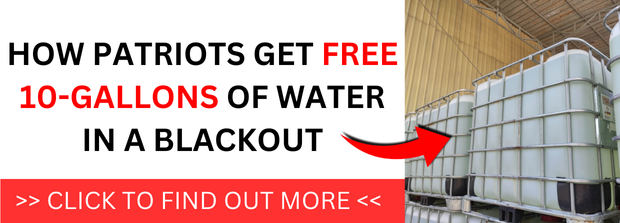The area I live in is currently under Level III water restrictions due to drought conditions. Officials are already planning to increase that to Level IV in May due to the low water levels in our reservoir and other sources that supply our municipal water system. Since we live in a small town, we actually depend on the larger city nearby for water.
As with any water shortage, the problem doesn’t originate here but far upstream. Our reservoir receives water from a watershed that spans 16,656 square miles. While we are close to the coast, there hasn’t been enough rainfall in that watershed to replenish the reservoir. The prognosis is not good, as we live in a fairly arid part of the country.
Fortunately, not all of our water comes from that single reservoir. Another reservoir further north provides some water to the nearby city that supplies us. That reservoir is currently 71% full, so there’s no immediate danger of running out of water. At least, not for human consumption—but there is a significant risk of our lawns and gardens drying up, as we don’t receive enough rainfall to sustain them without irrigation.
This situation isn’t unique to us. Several areas across the country have been facing similar challenges. It seems that every year, I hear reports of one region or another suffering through drought.
Understanding Drought
Many people mistakenly think of drought as a total lack of water, especially in the preparedness and survival community. However, it simply means a water shortage. Anytime a local water authority declares a water shortage, that area is experiencing drought conditions. Such situations are typically caused by abnormally low rainfall but can also result from insufficient snowfall or mismanagement of water resources (often by politicians), leading to lower-than-expected reservoir levels.
Generally, these droughts last for several months, though some are shorter. They impact daily life by restricting how freely we can use water. Unfortunately, many people ignore these restrictions, worsening the situation for everyone. Even so, there is usually enough water for drinking, cooking, and cleaning.
What About Your Garden?
For many preppers, the biggest concern during a drought is their garden. More and more of us are growing at least some of our own food, which requires a fair amount of water. When water becomes scarce, officials and code enforcement officers start looking for anyone whose lawn or garden appears too green.
However, those officials have a limitation: they can only regulate the use of public water—meaning water that has gone through the municipal system. If you’re using tap water to water your garden, they have a legitimate case against you. But if you can prove that you’re using an alternative water source, they have no grounds for enforcement. In fact, it can be amusing to watch them realize that the citation they just wrote is meaningless.
The key to avoiding trouble is ensuring you’re harvesting your own water from natural sources. Avoid using water from any public source, including rivers, lakes, and canals. Instead, rely on your own well or rainwater collection.
I won’t go into detail about installing rainwater collection systems or drilling a well here, as there are plenty of books and articles on those topics. However, I do want to introduce a few important considerations.
Weels and Water Availability
In many parts of the country, drilling a well means drilling deep—sometimes over 100 feet. The area where I previously lived had an average well depth of just over 100 feet. Where I live now, the average depth is over 500 feet. This is surprising, considering I’m now closer to the shore and not at a significantly higher elevation.
It’s not that water isn’t available at shallower depths—we can reach water at just five feet down. The problem is its quality. Water from a shallow well is often brackish, meaning it contains salt, though not as much as seawater.
Some plants can tolerate brackish water, but most cannot, especially vegetable crops. If you try to irrigate your garden with brackish water, at best, your plants will be stunted. At worst, they will die, leaving you without a food source.
Shallow Weels
A shallow well is typically defined as any well less than 20 feet deep. This limitation is due to the type of pump used—surface pumps, which can only pull water up from about 20 feet. The key to a successful shallow well is finding a subterranean stratum of sand. Groundwater collects in the gaps between sand grains, making it accessible. However, soil, clay, and rock don’t allow water to flow easily, meaning they won’t provide a reliable well.
Water Storage
Ideally, you shouldn’t pump water from your well only when you need it. Instead, store it in a cistern or large container, such as an intermediate bulk container (IBC). If you plan to purify your water, consider using two IBCs—one for raw water and one for purified water. Be sure to label them clearly so visitors don’t confuse the two.
The more water you can store, the more secure you’ll be. Even with a well, your water source might not be consistent. Having a reserve supply ensures that both your family and your garden can make it through the drought.
Solving the Brackish Water Problem
The U.S. has over 600 water desalination plants, with at least 400 built since 1971. Surprisingly, fewer than half of these treat seawater; the rest process brackish water.
If the government can treat brackish water to make it drinkable, so can we. The most common method used is reverse osmosis (RO). Large-scale RO systems filter out salt, producing about 60% purified water and 40% concentrated brine.
To use RO for well water purification, you’ll need a pump. RO systems require at least 40 PSI of water pressure to function. Your well pump may be able to handle this, but only if it provides sufficient pressure.
That said, not all well water needs purification. Gardens don’t require perfectly clean water—if there’s some mud in it, that won’t hurt your plants. The only time purification is necessary is when the water is brackish, as excessive salt can kill crops.







































































Drilling a shallow well and using a solar distiller seems like most practical solution. Solar distillers don’t have to be complicate nor expensive.
Mike, That makes sense. Comparing that to the major problem of photovoltaic solar panels for electricity being storage in batteries with problematic electrochemical cell chemistry needing mining, trade with hostile nations, slave labor, dependantcies upon societal and world stability, and great expense including vulnerable electronic equipment for charging and converting, we can produce our distilled water while the sun shines, yet all we need to use it at nights and cloudy days and times of drought are storage containers that don’t have the losses, inefficiencies, complexities, vulnerabilities nor even a miniscule fraction of the expense and troubles of storing electrical energy. I have an extremely high capacity for water storage.
[email protected]
Muddy well water is gone for your garden except for one problem. – clogging up your hoses connections, drip systems, timers and whatever other components you might have in your irrigation system, even if it is simply a hose and spray nozzle. Most hoses and timers have a screen within the connection to filter out particles. Those screens can get filled with clay and mud from well water. My garden is supplied from a dirty, “gyppy” well. There is lots of gypsum in the soil and water around here. That particular well also happens to have lots of mud in it.
Therefore, we have a series of 3 filters that the water flows through before leaving the well house on its way to the gardens, the bird house and a residence. The water, even filtered, is fine for plants and livestock but I don’t let my dog drink it, let alone humans. The filters get replaced every month, on average, and several times throughout the growing season, I need to check the screens at all the timers and connections between soaker hoses to clean the screens, whenever I noticed that the flow of water is restricted. It is not a huge problem, just a detail that needs to be checked periodically.